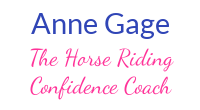A challenge when you're struggling with your horse riding confidence is believing that if you dismount when your horse “acts up”, you've let your horse win.
You've not been a good leader.
And you've taught him how to get you off his back.
Read on to find out why this thinking is wrong and why you should dismount whenever you feel the need to.
Understand Your Fear Threshold
Everyone has a different fear threshold - that point where your fear starts. For some people, just the thought of the horse possibly “acting up” is the trigger.
For others, it's after the horse has bucked, reared or spooked. The critical factor in the situation is your fear and your ability to manage it.
Fear is controlled by a primitive part of our brain called the Amygdala.
It's sometimes referred to as “the lizard brain”. And its programming can take over the logical mind as well as the body.
When this happens, you're in fight, flight or freeze mode.
- You lose the ability to think rationally,
- your body stiffens,
- your heart rate increases
- you either hold your breath or breathe very rapidly.
As the fear increases, you may feel other symptoms such as:
- feeling light headed,
- having nausea,
- getting tunnel vision,
- shaking, sweating or clammy skin.
Your horse of course senses and responds to all of these changes and becomes more anxious as well.
This is where things can go from bad to worse if you stay in the saddle.
You may ride through the issue, but neither you nor your horse will have enjoyed the experience.
Chances are greater that it will be a negative experience for you both.
Were You Frightened By Your Horse's Behaviour?
If something your horse did made you feel anxious then take the time to figure out what's the root cause of his behaviour.
Bucking, rearing, bolting and spooking are all signs that your horse is feeling fearful, confused or has pain.
You'll only eliminate the problem behaviour when you eliminate the root cause.
Pain is not always obvious. And it can often be undiagnosed.
Check your horse for any signs of muscle, joint, spinal or dental pain. Ulcers are often missed and are a common source of behavioural problems and tension in horses.
Be sure to check his saddle fit.
The cost of a veterinarian examination, a chiropractor or massage session or a saddle fitting by a qualified saddle fitter is money well spent. For both your and your horse's well-being.
Dismounting Can Be The Best Option
If you dismount when you recognize the first signs of fear, when your inner voice tells you to get off, or you don't have the riding skills to deal with the situation, you create a win-win training opportunity.
Because you can work through the situation - safely - from the ground.
Ground work is a great way for both you and your horse to regain your composure, focus and work through the fearful situation.
By using training building blocks, you and your horse can take one step at a time - at your own pace - to gain trust and confidence in yourselves and in each other.
When you're ready, continue these exercises when you're back in the saddle.
But, that doesn’t have to happen in the same session! If it does - fantastic! But equally, it might take several sessions - or several weeks - before you and your horse are ready for ridden work.
Practice Mounting and Dismounting To Build Confidence
If your horse is fine but you're a bundle of nerves, you can practice mounting and dismounting over and over.
That will certainly get your horse used to the idea that he doesn't have to walk off as soon as you're in the saddle.
And, he'll learn that dismounting doesn't necessarily mean you're finished with the ride.
When you're ready, ask your horse to walk a few steps – as far as you're comfortable going – before you halt and dismount. Gradually, and at your own pace, extend the length of time you stay in the saddle and/or the area of the trail or arena you go to.
You can even do some ground work before remounting. Your horse has no idea what your plan is so you can change your mind at any time.
As you feel more comfortable and confident, you can ask more of yourself and your horse – gradually extending the envelope of your comfort zone.
Eliminate Deadlines And Expectations
Take the pressure off yourself and your horse by eliminating deadlines and expectations. You're on a journey which will have highs and lows.
Sometimes you'll retrace steps you've already taken. And sometimes you'll leap forward.
Confidence comes from having a good foundation built from solid building blocks, having trust in yourself and your horse, and having a support team that encourages you but allows you to grow in your own time and at your own pace.
Enjoy every ride.
Stop Feeling Anxious About Riding Your Horse
Download my free (and printable) cheat sheet with 5 quick and effective calming techniques. Start using them right away to feel calmer about riding your horse.
Fill in the information below to immediately get your copy

